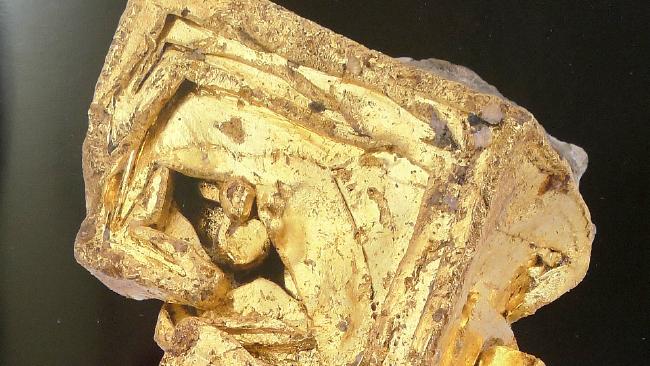Salim Edde bought the piece in good faith when he did not know it had been stolen. He says it will stay in Beirut.
Hedley Thomas, Stolen gold’s path from Australia to Beirut, The Australian, 26 August 2017
One of the world’s finest pieces of crystallised gold — scraped from a digging near Joe’s Gully in northern NSW by a miner in the early 1900s, acquired for the Australian Museum in Sydney, stolen in the late 1940s and cloaked in intrigue for the next 70 years — lies behind a vaulted door beneath Beirut.
In this secure basement, in the words of one entranced visitor, “lies a fortress with the most beautiful mineral collection in the world … one of the paramount private collections for the variety and quality of its minerals”.
It is here that reclusive Middle East billionaire Salim Edde — founder of his family-owned international software company Murex and a passionate collector of minerals and crystals — covets Australia’s perfectly formed gold specimen.
It is not going anywhere, vows Mr Edde, who bought the piece in good faith when he did not know it had been stolen. “I know that for as long as I am alive, it will stay where it is,’’ he said from Lebanon. “After I have gone, I don’t care. I do not see why I would return to Australia anything that I got legally. It is not my problem at all and this is my last word — it will stay here.”
The small piece from Tooloom, close to the Queensland border, weighs a couple of ounces. If not for its unique qualities and rare cubic shape that make it the envy of museum curators, serious traders and lovers of the yellow metal, the specimen’s value based on weight would be a fraction of sums of up to $1 million that a zealous collector would pay for it.
Yet the Joe’s Gully specimen was never meant to have been traded in the international market. As the property of Australia’s oldest public museum (founded in 1827) until its theft, it should not be in a private collection.
It is regarded by insiders as one of the mineral community’s “dirtiest secrets”, having fallen into the hands of a revered collector, the late Albert Chapman, who had worked closely with the museum.

It was witnessed and photographed in his collection in his Sydney home by experts in the field, many years after it was recorded in 1948 by the Australian Museum as “missing”. But it was long after Chapman’s death in 1996 and the reprint in 2013 of a famous book on mineral specimens including the piece, that collectors realised it was the same distinctive Joe’s Gully gold.
Three of those collectors — George Stacey, Paul Melville and Tony Forsyth — want it brought back to Australia and reinstated in a secure display for the public. Mr Forsyth, vice-president of the Mineralogical Society of Queensland, said: “Art collecting and mineral collecting are not very different — just imagine if a Sidney Nolan painting had been stolen from a museum in Sydney and ended up in a museum in the Middle East. There would be uproar.
“Myself and my fellow collectors would like nothing better than to enable this specimen to be repatriated back to where it truly belongs in the Australian Museum in Sydney, and where (its former owner and mine manager) George Smith wanted it displayed to the public of his state and of Australia.”
The prospects look bleak. Mr Edde, who is not implicated in any wrongdoing in his purchase, said: “Rest assured, I do not want to be convicted of any irregularity. But my conscience is not troubled at all because I have paid dearly for this specimen, which I have coveted since 2004 and which I bought from a reputed American dealer in 2014.”
He said he had heard many stories that the Joe’s Gully gold was stolen, but he knew none of its history when he bought it three years ago. He is adamant that whatever the skulduggery at the Australian Museum that led to it disappearing a few years after World War II, it should not have any bearing on his right to own it.
Asked about UN conventions that tackle the increasing theft of cultural property from museums and archaeological sites and return stolen items to their rightful owners, Mr Edde said they were irrelevant in this case as the Joe’s Gully gold went missing in 1948, two decades before the provisions were agreed by UNESCO in 1970.
Mr Forsyth has traced the Joe’s Gully specimen, which is 2.5cm wide, to another legendary collector, George Smith, an Inspector of Mines for NSW until his retirement in 1925. Smith’s job, says Mr Forsyth, “gave him access to mineral specimens from many mines … He had the opportunity to assemble a fabulous collection over many years”.

